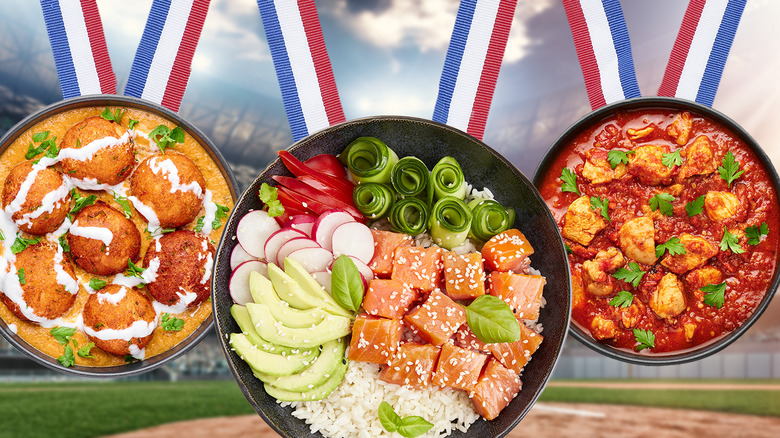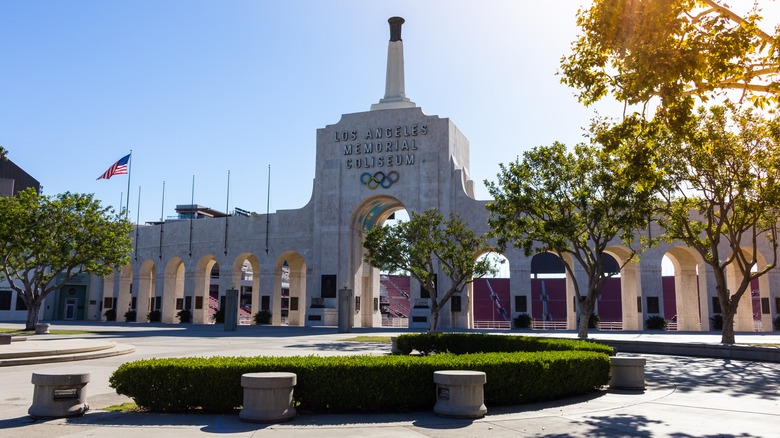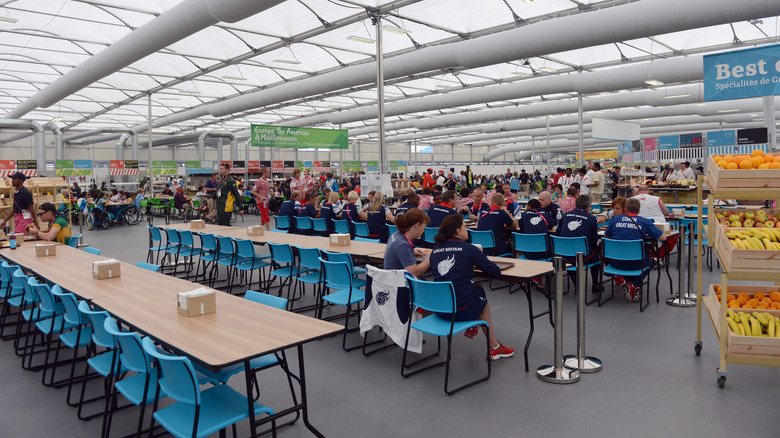How The 1984 Olympics Changed Food For The Games Forever
The Olympic Games present some of the most challenging, high-pressure scenarios imaginable, and not just for the athletes. The host city faces the most intense scrutiny of all. A successful hosting stint can make or break a city's image on the international stage, and few hosts have done it better than Los Angeles at the 1984 Summer Olympics. The city turned a multi-million dollar profit off the Games and ushered in a new era of Olympic television, but the longest-lasting impact came in the form of food. Without the 1984 Games, food at the Olympics — and California cuisine as a whole — wouldn't be the same today.
The organizers of the 1984 Olympics were trying to prove a point to the world through the food they served. This was in the midst of the Cold War, and the United States wanted to show up the previous Games' host, Moscow — where the media had been plied with boatloads of caviar (the former peasant food). They did so by turning the Olympics into a display of American prosperity, with food at the front and center. Eager to reinforce the image of the Soviet Union as a place where people barely scraped by on government rations, and the United States as a land of abundance, the 1984 Games went all out, showcasing both local specialties and international favorites. At the same time, they raised the standards for Olympic nutrition, and established a model that subsequent hosts have followed to this day.
What the '84 Olympians ate
Food was always a major point of concern for Olympians, and in the early years of the modern games, athletes had little in the way of choice. The host provided a limited food options, typically sticking to local cuisine. That changed when Los Angeles hosted the games for the first time in 1932 and opened a series of dining halls, each focusing on a different region's cuisine. That became the standard until 1984 when the city again flipped the script by having each dining hall serve an international menu, so Olympians from all over could enjoy foods from their homeland and try new dishes under the same roof. It's a model that subsequent Olympic hosts have continued to follow ever since.
Food for the 1984 Olympic Games was handled by Aramark, known back then as ARA Services. Their directive was a big one: feed approximately 10,300 athletes from 142 different countries. In order to please such a broad array of palates, the 1984 Games offered international specialties like North African couscous, Fijian yaqona, and Korean Kimchi (four years later, in 1988, the Olympics played a huge role in popularizing kimchi around the world). Variety was the name of the game. Each meal included four entree options, two soups, two hot vegetable sides, and up to 14 different types of salad. Showcasing fresh, local produce like avocados and artichoke hearts was a central focal point, with the 1984 Games helping to cement California's reputation for farm-to-table cuisine.
How the 1984 Olympics changed nutrition for athletes
The 1984 Olympic Games put more emphasis on nutrition than in previous years. Athletes require a tremendous amount of calories to fuel their exploits, so a single boxed lunch at the 1984 Games contained 2,500 calories. That's equivalent to a full day's worth of food for an average adult male, according to the NHS. These boxed lunches typically contained a sandwich with some kind of meat, fruit, nuts, cheese and crackers, yogurt, dessert, and a candy bar.
The 1984 Olympic Committee struck a promotional deal with Mars to provide M&Ms and Snickers bars as the official snack of the Games, which ended up becoming quite controversial when nutritionists pointed out the disparate effects of high-fat, high-sugar foods on athletes versus the average television viewer. The 1984 Games also saw isotonic sports drinks offered in Olympic dining halls. At that point, most people still didn't recognize that water isn't always the best drink to hydrate with, but that thinking was beginning to shift in the '80s, and Los Angeles was the first host city to recognize it.
The 1984 Games didn't get everything right. Notably, a number of swimmers and track athletes complained about a lack of low-fat food options. Even the failures made a positive impact though, as the Olympic committee commissioned an official report highlighting areas for improvement. Subsequent years saw the introduction of dietary specialists and nutrition labels, paving the way to better food, and more record-breaking feats of athletic greatness.


